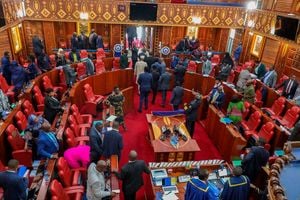Give SMEs the money
The fourth edition of the annual national conference for stakeholders in the small and medium enterprises (SMEs) sector is underway in Nairobi.
The huge potential of the SME sector in employment and wealth creation in Kenya is not debatable and the meeting presents a great opportunity to policy- and decision-makers to review and reflect on the piling challenges this critical economic contributor faces, especially in the wake of a worsening economy.
Limited financing to SMEs is a sticky issue, a perennial challenge that derives from their nature. The sector largely comprises firms that are young, informal and with little or no information about them.
The situation creates high levels of information disproportionateness and has worked against small-scale businesses in areas such as access to capital or funding from lending institutions, which deem them risky.
Regrettably, many a time, these firms also do not have sufficient assets to use as collateral to cancel out the risk burden imposed on them by lenders.
Not even listings on capital markets are a viable option for SMEs because investor focus remains on the larger and more established entities that boast sufficient liquidity and assets to cover their borrowing risks.
This problem cannot be wished away and policymakers must find urgent ways of supporting SMEs to weather the storm. For instance, more emphasis should go towards creating a comprehensive credit information-sharing framework for SMEs that would encourage more lenders to extend loans to them.
The State and policymakers should also find ways of improving the public credit guarantee scheme that was recently launched under the National Treasury so that SMEs have bigger leverage to tap loans from commercial banks.
Additionally, reforms to boost the use of movable assets as collateral which would accommodate small businesses with few fixed assets that are now popular with lenders are necessary.





